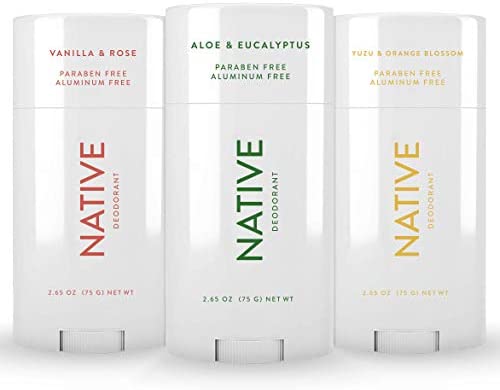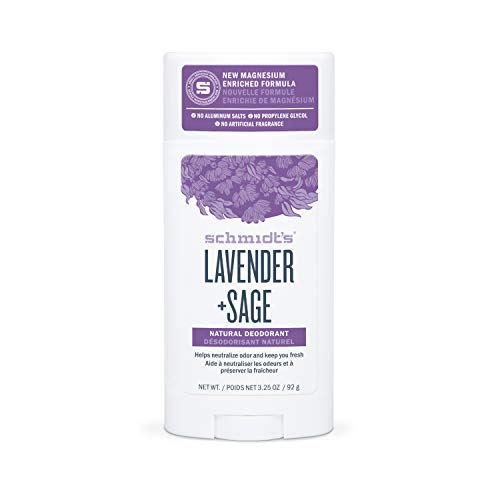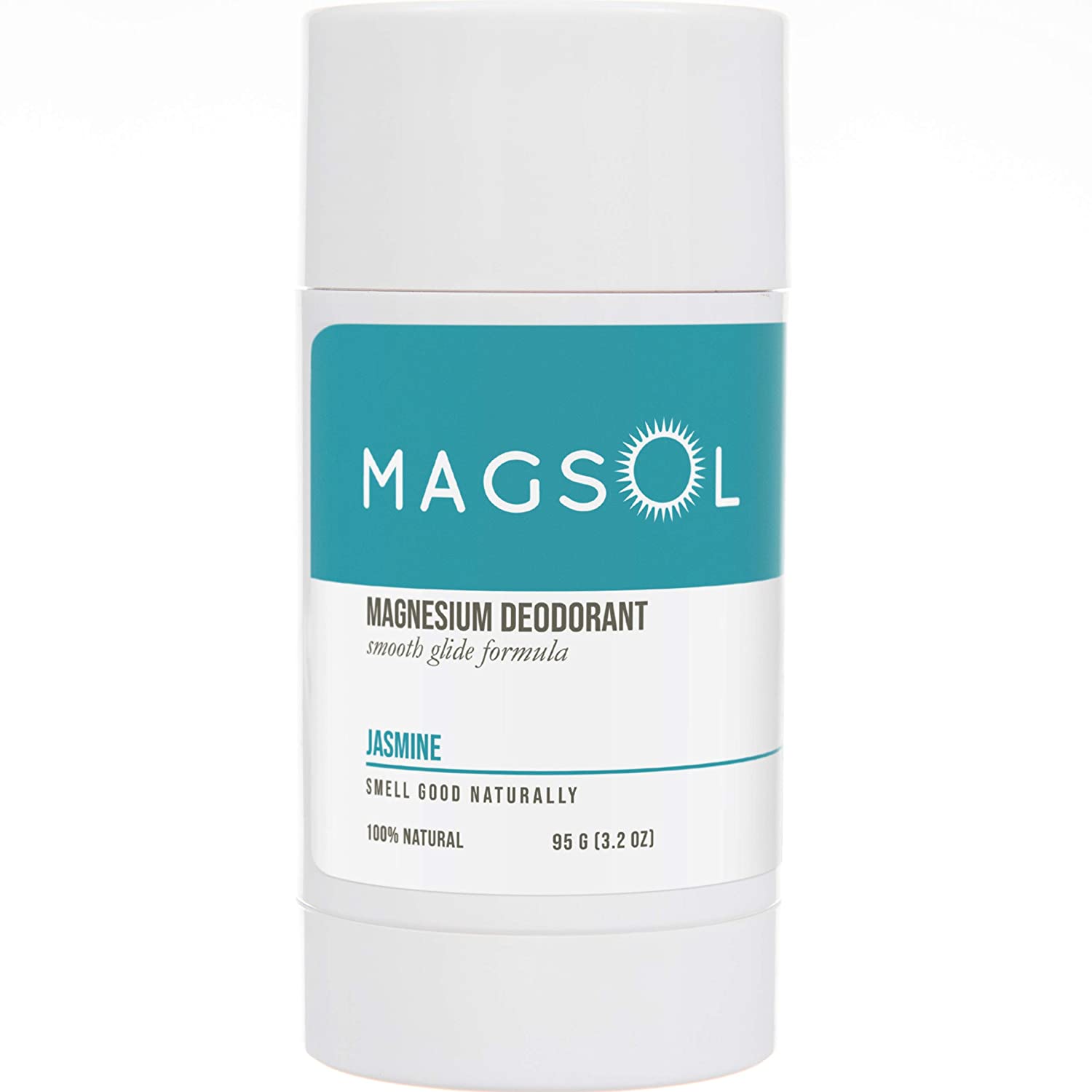Your Guide to Natural Deodorants
Updated 3rd of October 2020

Feel like you are conducting a chemistry experiment each time you apply deodorant? The list of ingredients present in many deodorants sure make if feel that way.
Thankfully, there are now many deodorants outside of the supermarket isle that offer superb odor inhibiting properties as well as wetness control without substances such as aluminium and parabens . These natural deodorants have performance, whilst offering protection for sensitive skin.
In this article, we discuss how a typical antiperspirants and deodorants function, and review natural alternatives. There has never been a better time to go aluminium free.
Quick product guide
What is an antiperspirant, and how does it differ from deodorant?
If you are a wanting a natural deodorant alternative, it’s useful to understand some terminology used in the industry.
An antiperspirant and deodorant are quite different products, with different purposes. But confusion around these terms comes from product labelling. Many products are labelled as an ‘antiperspirant deodorant.’ That is, they are both an antiperspirant and a deodorant. But each serves its own purpose. Understanding this difference lets you make the right choice for your body.
So what’s the difference? It’s probably easiest to start with the antiperspirant. Its function – as the name suggests – is to stop (or reduce) sweat in your underarm. Anything with the word ‘antiperspirant’ will contain aluminium to stop sweating. Of course, we all know our bodies sweat to cool us down. Sweating is what keeps our internal temperature at the ideal 98.6 degrees Fahrenheit. During and after exercise, through hormonal changes, or in stressful situations, without sweating your body will overheat. The antiperspirants purpose is not only to reduce sweating, it also reduces odor. But it reduces sweating where body odor is most obtrusive – underarms. Sweat itself is basically odorless, so it’s not the sweat that causes body odor. But sweat leads creates the perfect environment for bacteria to thrive. This is particularly the case in hot area such as your underarms.
As bacteria breaks down the sweat, this eventually leads to body odor. So an antiperspirant reduces odor by inhibiting the sweat that feeds the bacterial process. And it does this typically by blocking sweat glands .
An antiperspirant typically blocks the sweat glands via aluminium salts . The most common aluminium salts used are aluminium-chlorohydrate, and aluminium-zirconium tetrachlorohydrex gly. The aluminium acts to form blockages in the sweat ducts, in addition to acting as an astringent which further restricts the ducts. You won’t find any aluminium in natural deodorants.
A deodorant on the other hand is designed to eliminate odor and assist with wetness. But unlike the antiperspirant, the deodorant is designed to cover the smell that results from sweat rather than stop the natural sweating process, in addition to creating an environment where bacteria where thrive. Deodorants may contain perfumes and essential oils to mask smell. Some deodorants contain alcohol, which is very effective at killing odor causing bacteria on application. But the application alcohol also encourages sweating. Deodorants often contain triclosan , which is an antibacterial agent. Natural deodorants may use baking soda to control wetness (for example, the Schmidt's Deodorant range).

Checking deodorant ingredients, and natural credentials
There are in fact thousands of different ingredients you may find in a deodorant. The most common to look out for in your deodorant are the aluminium compounds, alcohol, parabens, propylene glycol, triclosan , phthalates, and perfumes and fragrances (which can irritate sensitive skin). But even with this knowledge it can still be daunting. A safe way to proceed when looking for an natural alternative is to start with manufacturer claims such as aluminium free, or paraben free. If it’s not actively stated by the manufacturer – it’s reasonably safe to assume the ingredient will be present. The ingredient list of these products will normally be readable – rather than a scientific thesis!
Once you reduce to natural ingredients, a common complaint is the slightly rough texture of deodorants containing baking soda (often listed in the ingredients as sodium bicarbonate). An natural magnesium deodorant such Magsol may help.

Assisting your deodorant
While a deodorant attempts to eliminate odor, there are some basic steps you can take to help the process. And these steps are about keeping the underarm bacteria in check. Keeping your armpits clean through washing is very important. As the number of bacteria reduces, body odor will reduce. Armpit hair has the impact of reducing the evaporation of sweat. So shaving or trimming your armpit hair can have a drastic impact when trying to reduce body odor.
Other factors that may lead to increased sweat and body odor include health conditions, fitness levels, and body size and composition. Increased body size and muscle mass both lead to increased heat, and therefore contribute to the bacterial process. Climate is also clearly a factor.
Transitioning to a natural deodorant
Transitioning to a natural deodorant is best during the cooler months. Your body can take some time to adjust from an aluminium based deodorant, and you may experience some periods of heavy underarm sweat without aluminium blocking your sweat ducts. Another issue some will face is staining of clothing during the transition period. Many put staining down to the aluminium in deodorants, but it is also caused by sweat. Again, the transition is the difficult part. Once you transition to a natural deodorant, it’s possible natural oils may irritate. But there are alternatives available if required.
What about crystal deodorants?
A crystal deodorant is another name for potassium alum deodorant sticks – which are made from natural mineral salts. Yes it’s a natural occurring mineral salt. But it does contain aluminium. There is ongoing debate about the extent to which your body many absorb aluminium from a crystal deodorant, with many arguing that potassium alum is a much larger molecule which won’t be absorbed by the skin. If your aim is to avoid aluminium on your skin, you may want to keep looking.
